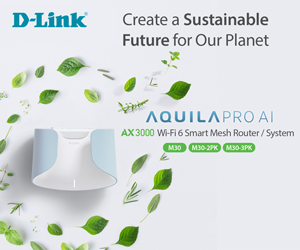VPP, or Virtual Power Plant, is a program where you receive a purchase discount on a new solar battery, provided you allow your grid electricity provider to manage it.
The NSW solar battery scheme offers extra incentives to use a VPP. The new Federal Government scheme will likely rely on VPP sign-up.
What is a VPP?
The altruistic sales pitch is that excess stored energy in your battery is fed into the grid when other people need it most.

There are about 150,000 home batteries from over 4 million solar installations, and about 25,000 are in VPP schemes. Why such a low number?
To allow an energy provider to use your asset is a huge challenge and a massive hurdle. Fundamentally, consumers don’t trust the energy industry. Consumers are motivated primarily to reduce their electricity bills rather than be self-sufficient”. James Sturch, Technical Director, Solar Edge.
The real value of a battery is to use it at night when you need it – no-cost power from the sun rather than expensive power from the grid.

Alarm bells in the fine print
That should raise alarm bells because other people need it most at peak times. That is typically at peak power tariffs in the morning, late afternoon or early evening when most people use appliances at home.
Your free electricity from the sun, generated in daylight hours, stored in your expensive battery, is being drained. Ergo, you don’t have enough energy to make it through the night, forcing you to buy back grid electricity at peak prices.
VPP puts undue strain on a battery, often requiring an additional full charge cycle daily. VPP managers say they never drain below 5-10%. Solar battery makers say this is far below the recommended 20% limit to prolong battery life.
That raises the impact of VPP on battery life and warranty. Let’s say the manufacturer offers a 10-year limited warranty based on 4,000 recharges (one per day) and a 60% depth-of-discharge cycle (10-70%). It is too early to calculate the impact of the VPP on warranty. Our expert says a VPP could see a 10-year battery warranty expire in half the time. To be clear, the warranty is based on a fixed number of discharge cycles, and VPP can increase these.
With feed-in tariffs now south of 5 cents per kWh (what you get for input), the VPP managers resell that for 70 cents or more per kWh.
To be clear, you help others (instead of yourself) and must buy electricity often at peak prices when your battery is empty. This does not pass the pub test.
But there is more bad news
VPP managers or aggregators
- Invariably use rubbery figures to show the economics. These are highly suspect based on the best case, not the worst or typical case.
- Take total control of your battery 24/7. Most people buy batteries to regain control of their energy usage, not let someone else tell you what to do with it.
- Hammer your battery as hard as they like, which shortens its lifespan. Why? Because VPP managers don’t have granular information, just grid stats that mean it is all or nothing.
- Often, no (or minimal) reserve battery capacity is available for the system owner. This is an important consideration for homeowners who think having a battery equals night use and blackout protection.
- Statistics show that VPP batteries often use grid power to charge once empty instead of the free energy from the sun.
- Can place you on a demand tariff (Peak Demand Reduction Scheme PDRS), which costs more than a plan.
- EV home vehicle charging can use free solar power – you need a battery.
- VPP often have stiff exit fees for early termination.
- Battery prices will skyrocket. Read Labor’s solar battery con – won’t help most Aussies
CyberShack’s view: A VPP is bad news – run away.
The government only wants the paper Solar Credits to salve its Paris Accord conscience on going green by 2050.
Fact: Many VPP schemes around the world have failed.
In 2019, the Australian Energy Market Operator (AEMO) ran a demonstration project to show how VPPS could benefit the network and consumers. They set out to connect 700 megawatts of VPP power by 2022, approximately 500 consumers. In three years, they only managed to enrol a fraction of what they needed—just 31 megawatts, or 3% of their target. That was despite Tesla offering batteries at a fraction of the cost.
VPP globally fail because a) they take your free energy, let’s say at 5 cents per kWh, b) they drain your battery, and c) they sell power back to you to charge the battery at least 30 cents per kWh (some 60-70 cents). In other words, VPP puts the energy provider first and the customer last.
Germany’s VPP trials were a dismal failure. Ultimately, they found that community batteries storing excess power generated from the solar panels in that area was the only economically viable method. It put the consumer first and did not require the heavy-handed VPP approach to battery management!
A VPP is really just you investing hard-earned money to become a power generator. It is the government’s or energy companies’ job to invest in a stable network.








8 comments
Gary
I have been with Plico 3yrs. Every VPP event(about 3/year) in Perth we are paid 3 x the charge tariff
At peak I give say 5kw tariff 50c/kw, I receive 3 x 50c or $1.50 x 5kw credit on my bill
Ray Shaw
Yes, we are learnijng that some VPP share demannd tariffs. Thanks
Robert
I installed an extra battery last year.
Found that I was signed up to Evergen VVP by my battery supplier. This was without my consent.
On complaining they told me my supplier or installer should have informed me that I was being signed up. With great difficulty I was removed from this “service” after numerous emails and pressure to remain . They are supposed to delete all the information supplied to them by my battery supplier, but I have my doubts about this .
Ray Shaw
We are hearing of other cases where the cheap battery installer in the fine print automatically opts in to a VPP – presumably to get a kickback. This is illegal and amounts to hidden commissions.
Phillip
We installed a VPP in late 2022 with a guarantee of no power bills for 5 years. We don’t pay any supply charges as these are paid by the VPP provider running our system. We are very happy with our VPP which was installed and is run by Reposit.
Kym Phillips
“The altruistic sales pitch is that excess stored energy in your battery is fed into the grid when other people need it most.”
– When others need it most is most probably when I need it most too!
Brian Marsh
Ray
Thanks for the article. I thought there was a rat in the ranks re VPP systems. You have nailed it very succinctly.
I have been involved in solar power systems at our residence for over the last 10 plus years and it has been a mostly fruitful exercise with the exception of the lowering of the feed-in tariffs in that period.
National and State energy regulators need to extract the digit on this. They are being hood winked by the big end of the supply chain.
Keep up your good reporting in this environment.
Ray Shaw
I installed a 10kW system and battery late last year. I love that, apart from rainy days, it generates more than enough to cover my daytime household use and my nighttime use – we are living the dream. We export enough to cover the daily use charge. When/if we get an EV, we will export less and charge it, still free from the sun. The real benefit is not in exporting to the grid but in how best to use the free power you have, which is worth from 30 cents to $1 per kWh. PS – My power prices rose 49% over the past 5 years, and I am now told my existing plan will rise 23% on expiry in May! WTF? There is a good story here!